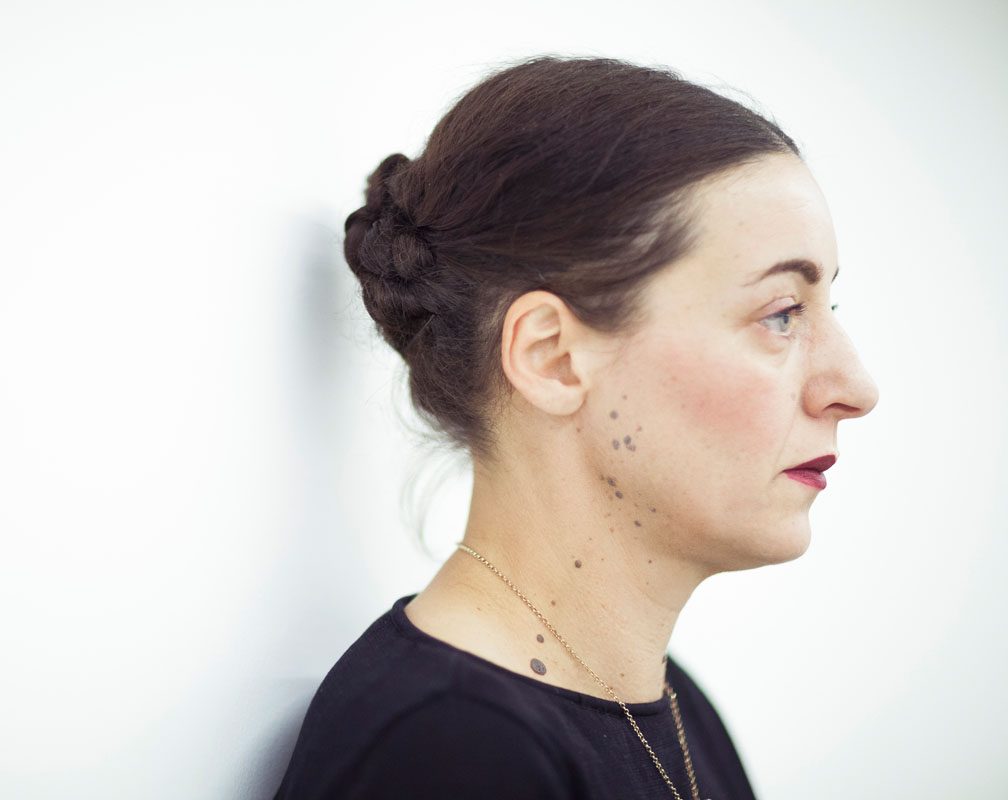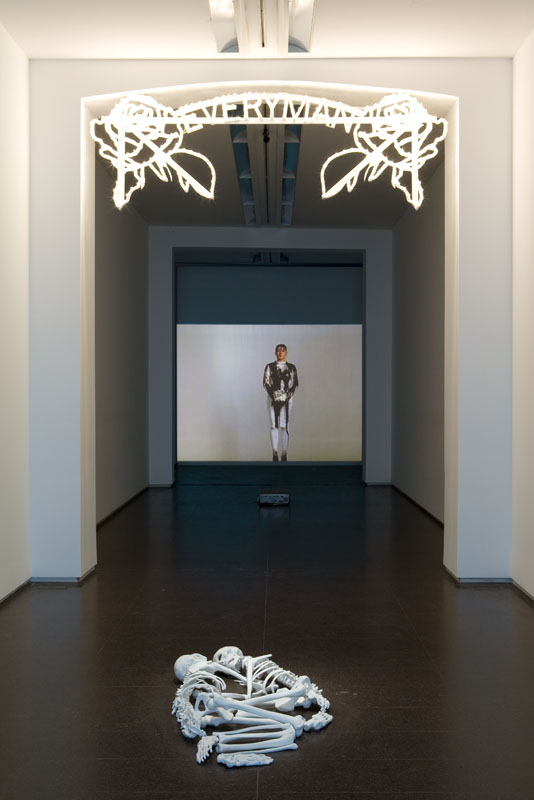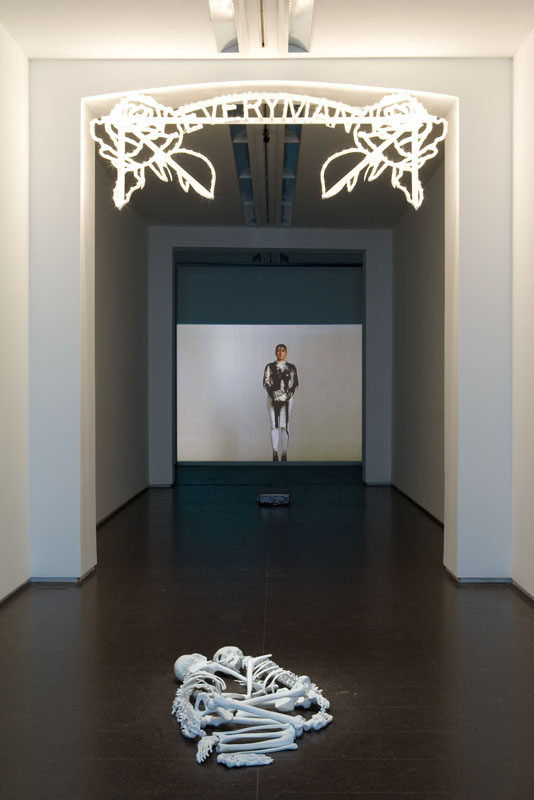In Bianca and her Opposite – the title of the video gives the name to the exhibition – the artist stands motionless, staring straight at the viewer. Like a bride, she wears a white dress and holds a bouquet of roses of the same colour. The static atmosphere of the scene is suddenly interrupted by several drops of black water which slowly begin to fall from above. The dress gradually changes colour, as do the body and face of the protagonist. In this way, in the arc of time that symbolises a lived experience, the subject is radically transformed and the dress, like the skin of the protagonist, absorbs the black liquid as the indelible sign of the passing of time. The decision to project the figure in its actual size directly involves the observer who becomes the participant of the event - as if it were really happening at the same time in which it is observed. The images are accompanied by the choral singing of the Balletto Civile whose melismas evoke a “wordless” story. The first installation, ”Death returned to her bed, she embraced the man, and then, without a clear conception of what was happening, she, who never slept, felt the sweet pull of sleep at her eyelids. The following day, no-one died.” (taken from the novel “Death’s Intermittences” by José Saramago), situated at the entrance to the gallery, is inspired by the recent archaeological find near Mantua of two skeletons dating to the Neolithic. They belong to a man and a woman; their bodies were buried opposite each other, their limbs entwined as if joined in an embrace. The intimacy of this gesture, which has remained intact over the centuries, alludes to the capacity of love to stretch beyond all temporal boundaries and, for this reason, it takes on a profound symbolic meaning. Using the photo of the original find, the artist has made ceramic casts of the two skeletons, which are arranged so as to reproduce the position of the skeletons at the moment of discovery. The second installation is entitled Everyman and is inspired by the latest novel by Philip Roth. It consists of a luminous arch decorated with floral motifs similar to those used in small towns for festivals and celebrations. Inside the arch is the word “everyman”. The arch represents a threshold, becoming the symbol of a passage or crossing which is the fate of all mankind while, contemporarily, sanctioning the bond between life, love and death. The layout of the exhibition emphasises the idea of expectation, the inseparable link between love and life and the inexorable passing of time suspended between birth and death.
Marzia Migliora
Bianca e il suo contrario

Photo Gallery
L'artista

Marzia Migliora (born in Alessandria in 1972) lives and works in Turin. The work of Marzia Migliora is based on a wide range of languages including photography, video, sound, performance, installation and drawing. Her works originate from the close attention she devotes to individuals and their everyday lives. She has recently explored




